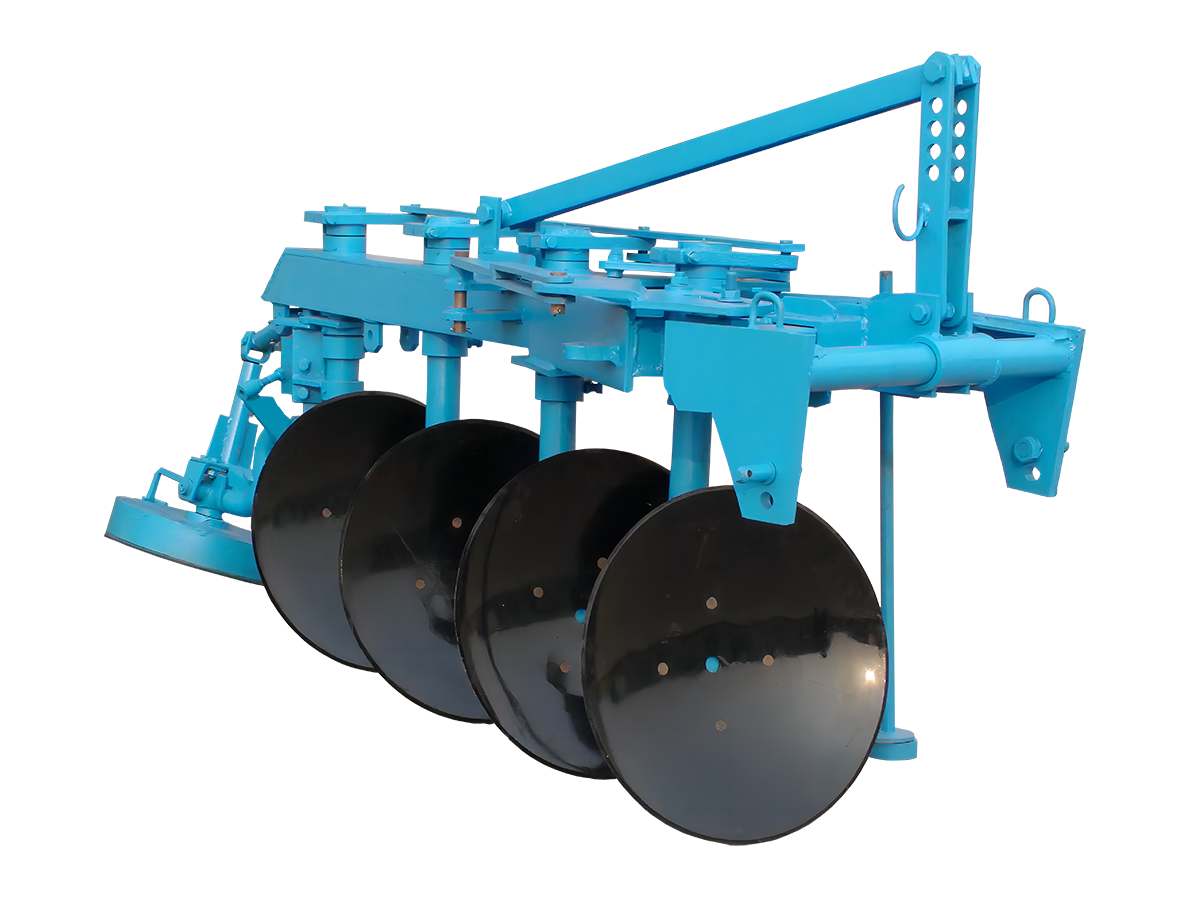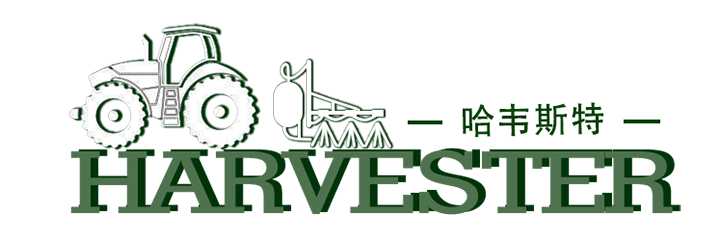The classification and selection of the disk plough
2024-01-29
This paper will introduce the classification and selection of the disk plough in detail:
A.Classification:
1. According to whether they are powered or not: the disc plough is divided into: driven disc plough and suspended disk plough.
2.According to the structure, it is divided into: universal disc plough, bidirectional disc plough and vertical disc plough etc.
(1) Universal disc plough
Generally composed of disk plough body, plough frame, suspension frame and tail wheel. The universal disk plough consists of one or more disk plough bodies, and each disc is independently mounted on a plough column welded to the main inclined beam. In the process of ploughing, the disk plane and the forward direction should constitute a bias Angle of 40°~45°, and the vertical plane should constitute an inclination of 15°~25°. Some ordinary disk plough also install soil board in front of the disk plough, its function is to scrape off the soil attached to the concave surface, and promote the soil to flip, enhance the coverage performance. The tail wheel is installed in the rear of the disk plough, which balances the lateral pressure to stabilize the disk plough. To ensure the tillage quality, both the upper and lower position and the deflection angle of the tail wheel can be adjusted.
(2) Bidirectional disc plough
There is a disk reversing mechanism, which allows the disk to turn to the left or right with the main beam during the changing direction, so that the disk is always turn in the same direction as the plot.
(3) Vertical disc plough
The plane of the disc blade mouth is perpendicular to the ground, that is, only the bias Angle and no inclination. A disk plough usually has 10 to dozens of disks in a row along the main inclined beam, each disc is individually mounted on a plow column hinged with the main inclined beam, with a pressurized spring to make the disk. In case of obstacles, the disk is lifted up, and then automatically reset after crossing the obstacles.
B.Selection:
When using the disk plough, it should be selected according to the soil conditions, tillage requirements, unit type and technical status analysis.
1. Determine the types of selected products according to the local agronomic requirements.
2. To determine the type and width of the plough to buy according to the power of the tractor you have or want to buy. The tractor with different power is equipped with different models and width of the plow.
3. Compare the quality of the products.
1. According to whether they are powered or not: the disc plough is divided into: driven disc plough and suspended disk plough.
2.According to the structure, it is divided into: universal disc plough, bidirectional disc plough and vertical disc plough etc.
(1) Universal disc plough
Generally composed of disk plough body, plough frame, suspension frame and tail wheel. The universal disk plough consists of one or more disk plough bodies, and each disc is independently mounted on a plough column welded to the main inclined beam. In the process of ploughing, the disk plane and the forward direction should constitute a bias Angle of 40°~45°, and the vertical plane should constitute an inclination of 15°~25°. Some ordinary disk plough also install soil board in front of the disk plough, its function is to scrape off the soil attached to the concave surface, and promote the soil to flip, enhance the coverage performance. The tail wheel is installed in the rear of the disk plough, which balances the lateral pressure to stabilize the disk plough. To ensure the tillage quality, both the upper and lower position and the deflection angle of the tail wheel can be adjusted.
(2) Bidirectional disc plough
There is a disk reversing mechanism, which allows the disk to turn to the left or right with the main beam during the changing direction, so that the disk is always turn in the same direction as the plot.
(3) Vertical disc plough
The plane of the disc blade mouth is perpendicular to the ground, that is, only the bias Angle and no inclination. A disk plough usually has 10 to dozens of disks in a row along the main inclined beam, each disc is individually mounted on a plow column hinged with the main inclined beam, with a pressurized spring to make the disk. In case of obstacles, the disk is lifted up, and then automatically reset after crossing the obstacles.
B.Selection:
When using the disk plough, it should be selected according to the soil conditions, tillage requirements, unit type and technical status analysis.
1. Determine the types of selected products according to the local agronomic requirements.
2. To determine the type and width of the plough to buy according to the power of the tractor you have or want to buy. The tractor with different power is equipped with different models and width of the plow.
3. Compare the quality of the products.





